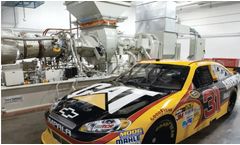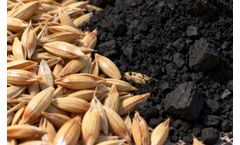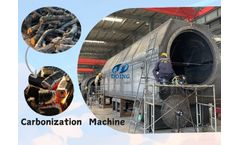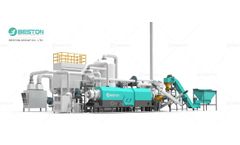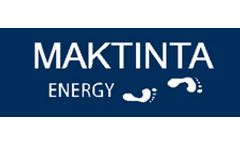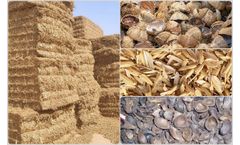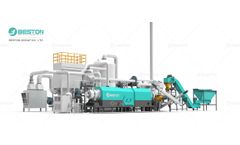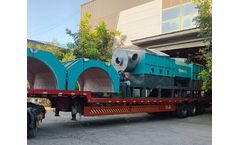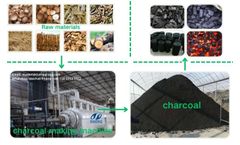Refine by
Carbonizer Articles & Analysis
2,049 articles found
Over the course of one year, the energy produced at the facility creates less carbon dioxide - some 36,000 metric tons less - compared with using traditional fossil fuels to generate the same energy. ...
Rice husk carbonization is an important method for reusing agricultural waste, but direct carbonization often fails to achieve ideal results. ...
Biochar, a carbon-rich material derived from biomass through thermal decomposition, has gained prominence as both a soil amendment and an industrial input. ...
The size of the crushed wood should be approximately 3 cm, ensuring uniform carbonization and improving thermal efficiency. Carbonization Process The pre-treated wood feedstock is delivered to the inlet of the carbonization furnace via a feeder. ...
Arizona State University's (ASU) historic main campus in Tempe, Arizona is a thriving urban undergrad, graduate, and research campus with 51,500 students. ASU ranked first in U.S News and World Report's list of "Most Innovative Schools" and among the "Best Graduate Schools" in the nation in 2019. The Sierra Club (2018) ranked ASU fifth overall in sustainability and Times Higher Education (2018) ...
Biogen Idee is a global leader in the discovery, development, manufacturing and commercialization of innovative therapies. In 2003. the pharmaceutical company needed to do something to ensure the critical supply of steam and electricity to its Kendall Square campus, both of which came from outside sources. The loss of electricity for an hour means as much as 24 to 36 days of product loss due to ...
What Is Biochar? Biochar is a stable, carbon-rich material created when organic biomass is heated in a low-oxygen environment. Unlike traditional burning, this process locks carbon into a solid form rather than releasing it into the atmosphere as CO₂. Key Environmental Benefits 1. Carbon Sequestration Biochar is an effective way to capture and ...
In recent years, the conversation around climate change mitigation has shifted from simply reducing emissions to actively removing carbon dioxide from the atmosphere. Among the emerging solutions, biochar production through biomass carbonization is gaining attention as both a waste management tool and a carbon sequestration strategy. ...
Materials should be properly dried to reduce excessive moisture, which can destabilize reactor temperatures and lower carbonization efficiency. Uniform particle size enhances heat transfer and prevents irregular combustion inside the chamber. ...
Beginning in 2021, a large colocation data center (colo) in Ireland had their local electrical utility severely limit new grid connection permits. The site had a power utility connection agreement in place for only part of their necessary campus demand. The utility advised of the potential for a new connection, but not until ...
A plastic to oil machine typically produces three outputs: Pyrolysis oil (liquid fuel) Combustible gas (used for heating the system) Solid residues (char or carbon black) When a catalyst is added to the process, the reaction becomes more efficient. ...
Resource Conservation Through pyrolysis, valuable materials such as carbon black (from tire waste) and recovered metals (from e-waste) can be recycled and repurposed for use in various industries. ...
Maktinta designed and installed a solar pool heating system at Campolindo High School in Walnut Creek, California, in 2016, providing year-round heating to three Olympic-sized swimming pools. This project, recognized as the largest solar pool heating system in the United States, features 470 EchoSpark solar pool collectors. As a DSA-approved project, it meets the stringent standards set by the ...
Maktinta successfully delivered a significant solar PV installation at the BP Oil industrial complex in Richmond, CA, a vital facility at the Port of Richmond. The client, BP Oil, sought to enhance energy sustainability and operational resilience. Maktinta engineered a robust 750 kWp solar PV system, commencing with a critical roof replacement to ensure long-term structural integrity. ...
Maktinta completed a comprehensive energy retrofit for student housing in Cotati, CA, a facility serving UC Sonoma students. The project aimed to significantly reduce the building's CO2 footprint by integrating both solar thermal and solar PV systems. The advanced solar thermal installation efficiently provides domestic hot water to the building, while the 50 kWp solar PV system actively reduces ...
For facilities aiming to generate carbon credits, third-party verification is indispensable. Continuous plastic pyrolysis plant operations must undergo lifecycle assessments to quantify greenhouse gas mitigation benefits, with certification bodies verifying the validity of carbon removal claims. ...
The best feedstock for biochar production depends on its availability, carbon content, and ease of processing. High-quality biochar raw materials generally share several common characteristics: high carbon content, suitable density, and a reasonable ash content. ...
Modern small charcoal making machines incorporate controlled pyrolysis chambers and automated airflow regulation, ensuring uniform carbonization. Enhanced carbon content, low moisture, and uniform particle size increase product market value. ...
Pyrolysis gases generated during biomass carbonization are channeled through sealed conduits, preventing direct atmospheric release. ...
A charcoal maker machine converts biomass materials into high-quality charcoal through a high-temperature carbonization process. This process not only preserves the energy value of the raw materials but also significantly reduces the environmental pollution caused by direct incineration. ...

